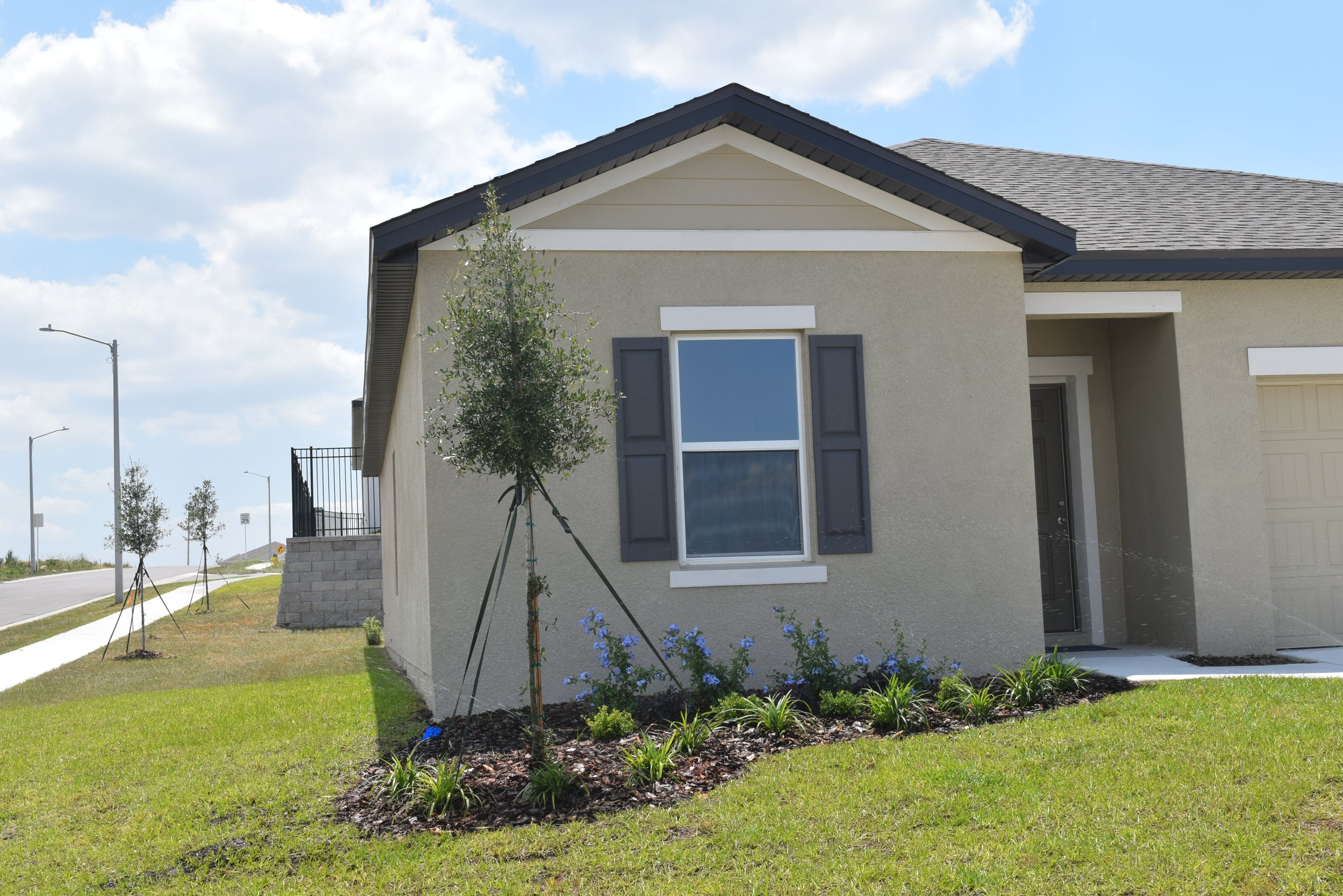This oak tree is planted only 3 feet from the foundation of the home. How far away should it have been planted?
Canopy tree shall mean a species of tree that which normally grows to a mature height of forty (40) feet or more. (Florida ordinance)
Builders and developers are mandated by municipal building codes to plant a determined amount of canopy trees per property. The builder documents on submitted landscape plans where the trees are to be planted. The plan is approved. Why are builders allowed to plant canopy trees in the wrong location?
This oak tree, depending on the species, will grow 40’ to 60’ high and 60’ to 120’ wide. The tree in the photo above is planted 3’ from the foundation of the home. This very common practice is landscape malpractice to the ultimate degree. It puts the onus of the unknowing homeowner to pay for the cost to remove or transplant the tree to a proper location.
April 25th is National Arbor Day and everyone is encouraged to plant a tree. Please research to find out the mature width of your tree and plant it where it can grow to be its healthiest and live a long life.
Despite its cute little conical-shaped canopy, the oak tree above should be planted at least 30’ away from the home just like the oak trees in the background.
Who’s to blame? Whoever in the building code department who is signing off on the submitted landscape plans of new communities. They should know better - they write the rules.





